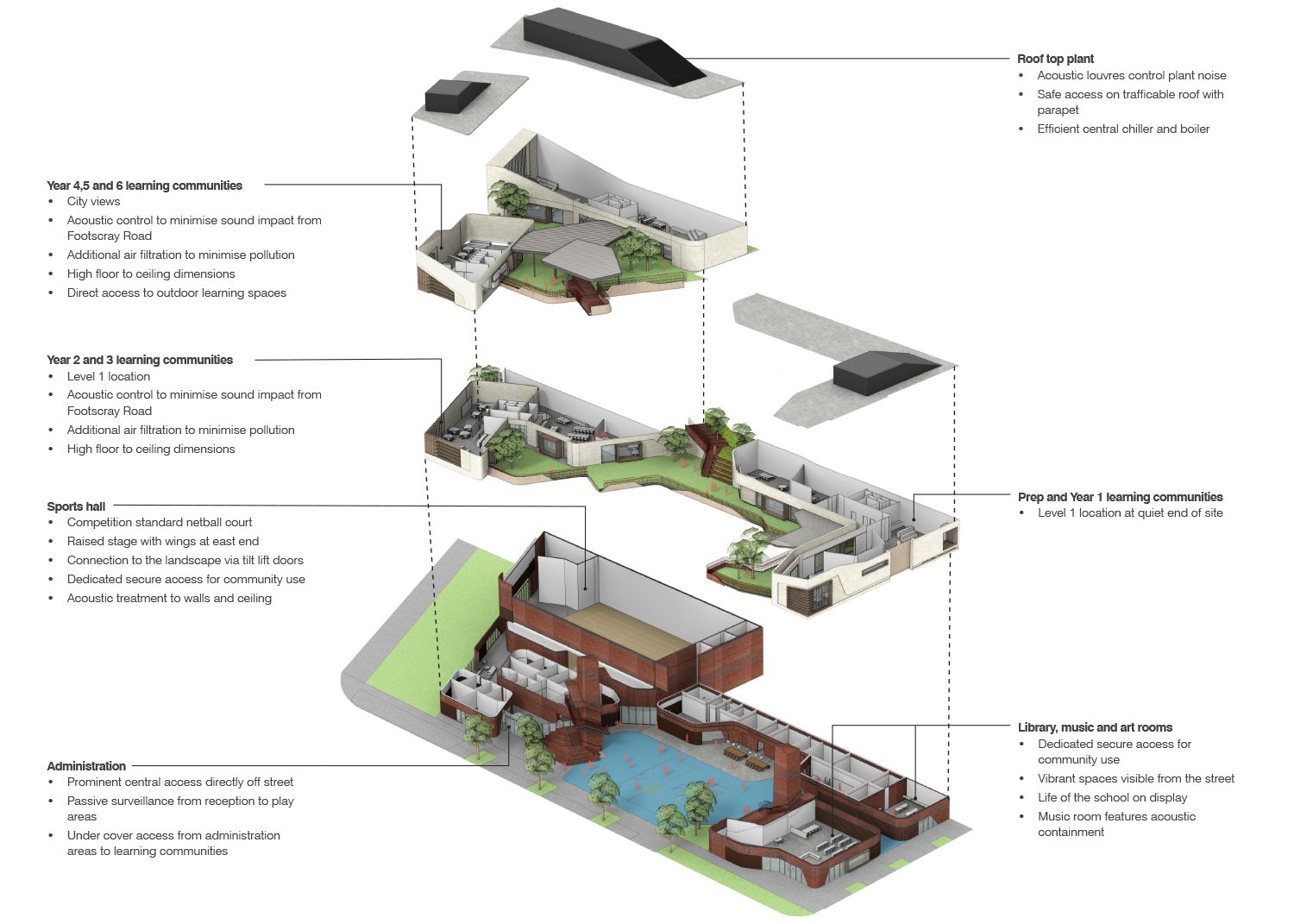With an ever-increasing population and land that is both scarce and expensive, Australia is following in the footsteps of countries like Japan and Singapore, embracing the new educational phenomenon: Vertical Schools.
Vertical schooling is trending in the most populous cities of Australia with an increasing number being commissioned, with the largest, Arthur Phillip High School in NSW boasting 17-stories.
It’s logical that as space runs out, schools build up, but is this desirable for the learning outcomes and the wellbeing of our students or is it just out of necessity and the fiscal advantage to government budgets?

Image courtesy of the Victorian School Building Authority.
Whilst it’s true that the ability to take advantage of smaller urban sites and affordability are the key reasons for vertical schools, they also allow governments to build as big as they need, rather than just as big as the space dictates which helps to accommodate for future population growth. This means schools can take enrolments from students who would otherwise have to travel further afield for their education.
For students, the main benefit of these densely populated vertical schools are the additional opportunities created for connection and interaction given the shared bump space. This can foster contact, communication and socialisation as students come together in shared spaces - a community hub if you will, a place where students belong.
This is the key advantage of vertical schools for students but there are number of drawbacks. For example, to avoid building a pancake stack with poor natural lighting, vertical school designs often have open atriums which connect the levels and provide transparency between floors. These open areas can be particularly noisy if the acoustics are not properly resolved. Additionally, this busy hub environment often results in congestion as students move between lesson changeovers in shared spaces.
But the main concern for children’s wellbeing in multi-level schools is a lack of outdoor space that results in reduced recreation and sporting activities. It’s commonly believed that students in vertical schools typically spend less time outdoors as the space is often less than that offered by sprawling single level campuses and it is usually shared among a larger number of students. With vertical school building design, each level is often built with multiple terraces to connect the indoor and outdoor spaces, but these require more resources to supervise and aren’t always utilised due to safety concerns. Furthermore, to accommodate a higher number of students, break times are often staggered which can result in students at play disrupting those in class.
Children, particularly young boys, need space to run free in wide open areas which burns energy but as it’s not always possible to include a full-sized sports ground into the design, that accumulated energy can result in disruptive classroom behaviour. Astroturf which can be hot underfoot then replaces natural lawn and there’s often an absence of trees to improve air quality and provide shade and protection.
Safety and supervision are also important factors in vertical schools. Having an influx of students commute to the same urban location and enter through a single entrance raises hygiene and safety concerns and fire evacuation comes with its own challenges with a direct correlation between the number of floors and the amount of time it takes to get everyone out safely. Given the inner-city location, safe nearby assembly points may not exist, particularly for younger students who don’t always follow procedure.
So, whilst vertical schools have the advantage of increased physical connection, they are less adaptive to students’ changing needs, they don’t prioritise outdoor space and activity as well as large campuses can and in the event of a fire… well I know where I’d rather be, so best we commission them only where they’re required, in dense urban settings where students would otherwise face lengthy commutes to alternative campuses.
Header Image courtesy of woodsolutions.com.au


/Buzz%20Chair/BUZ004-SFX.jpg)